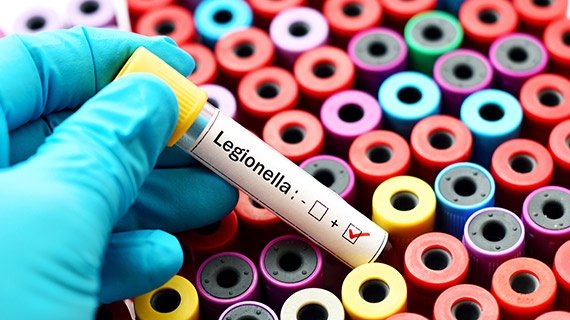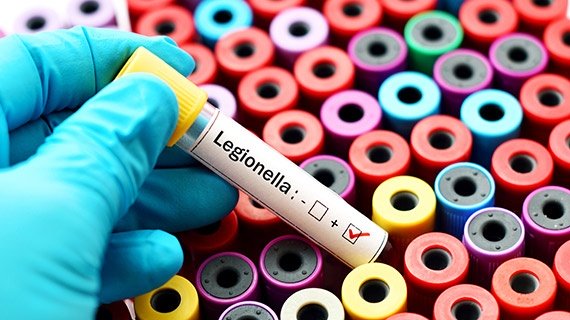
There’s no need to cue THAT bit of the Top Gun soundtrack, which mentions something about a ‘highway to the danger zone’. However Tom Cruise-levels of drama might need to be channeled to ensure that you don’t plunge your business into the equally as foreboding, ‘Legionella Danger Zone’. Which for those not in the loop, is the precise range of temperatures which significantly increase the chances of stored water playing host to a raft of unwanted bacterium, if and when acknowledged. OK. Far less Hollywood-y, yet by the same token, FAR more realistic and relevant to all of us.
Perpetuating a fictitious tone for a paragraph more (only as far removed from USAF pilots with nicknames such as ‘Maverick’ and ‘Goose’ as can be, when now referring to a certain fairy tale heroine), the ‘Goldilocks’ range is another turn of phrase commonly frequented by water treatment specialists when discussing water temps which fall between the crucial 20°C and 50°C ‘danger zone’.
This particular vernacular is borrowed from the ‘Goldilocks Zone’ which you may or may not have heard of when scientists explain the habitable zone around a star, where the temperature is considered to be just right - not too hot and not too cold - for liquid water to exist on an planet. And in principle therefore suggests the possibility of planets which exist in a so-called Goldilocks Zone to be able to sustain human life in the future.
Anyway, that's enough of these tenuous word associations, and much closer to home let’s focus our minds on the (not-so) inconsequential business of legionella bacteria. And all of its potentially health-impacting ramifications. If let unobserved/treated, according to experts in their field of research and tangible application.
The Importance of Steering Clear of the Legionella Danger Zone
It’s paramount that businesses which house stored water facilities are acutely aware that temperatures are key to whether or not legionella takes root in a system or infrastructure whereby water passes through, and which ultimately then enters the human sphere, by way of various outlets found in workplaces, including taps and showers. Essential knowledge dictates that bacteria will struggle to take hold in water temps below 20°C (although remain dormant). While conversely when water temps exceed 50°C, the propensity for legionella survival is very remote. However anywhere between this sliding range is an altogether different matter. And subsequently enters the aforementioned 'legionella danger zone' we waxed lyrical about earlier.
So, naturally a best practice is both preached and largely practiced; and one that universally advocates cold water temperatures remain sub-20°C, whilst water heaters should be set to a minimum 60°C benchmark (with water emerging from public-accessed outlets at 50°C). Although the latter barometer as such should be set at 55°C for healthcare environments such as hospitals, care homes and dentists.
But, Doesn't Legionella Still have the Capacity to Exist in Cold Water?
Yes, but the likelihood of legionella bacteria colonising closed water systems has been scientifically proven to be negligible, as at temperature below 20 degrees Celsius it becomes inactive and unable to multiply and subsequently thrive. And therefore doesn't pose a significant threat to public health. However, should temperatures later fluctuate (due to various variables indicative of individual locations and logistics) between 20 and 45°C, then it's an altogether gloomier story. With the optimum temperature for proliferation acknowledged as being around 37°C.
In instances where legionella is allowed to remain intact in stored water in this scenario, then there is a high probability that the entire system could be susceptible to infection. And this series of events can both take root and potential wreak havoc in a relatively short passage of time thereafter too; ultimately placing individuals exposed to infected water via outlets at serious risk of contracting Legionnaires' disease.
So, Does Placing Water Storage Facilities in Certain Places Minimise the Threat Of Legionella Taking Hold?
Yes again. Locating a cold water storage system in a identifiably cool situation, as well as insulating the pipes feeding in and out of said system can make a considerable difference in ensuring that water temps remain at 20 degrees Celsius and below. Naturally, tanks should be monitored closely and routinely (at least once every 6 months), with ball valve checks the soundest means of determining accurate temperatures within. You can also check temps of the water entering the storage area at the mains too.
At the other end of the scale - and in terms of hot water storage systems - it makes sense to fit a thermometer pocket in situ, which improves accuracy and makes measurement-taking that much more straightforward at source. Referring to a representative range of sentinel outlets, the temp of the water flowing from (and returning to) calorifiers and/or boilers should always be a minimum of 60 degrees Celsius to ensure legionella doesn't have the platform to build.
Is This Risk More Commonplace Than It's Been Previously?
There's an argument both ways and no definitive answer to this query. The threat from legionella bacteria when stored water deviates from 20 degrees Celsius to 60°C is well documented and has been for many years now. However in recent times emphasis on energy-saving means and the practical facilitation of for environmental purposes could be said to have coincided with a greater need for awareness in general. And that's for the simple reason that an increasing number of building owners and operators have elected to either turn down or switch off hot water systems overnight (and over weekends) to both reduce carbon emissions and meet budgetary requirements.
Meanwhile more and more businesses are turning to alternative fuels in a bid to tick the right societal boxes, with technologies such as solar thermal heating systems making impacts of late. The problem being if the system is not controlled correctly and maintained regularly, then a greater volume of hot water could result in being stored in the legionella danger zone. Elsewhere blending valve installations have been on the rise, which can - if not carefully monitored and set accordingly - can cause hot water temperatures to dip and lower into said zone; perpetuated further and wider recently as a safety counter to concerns about hot water scalding (in care homes, etc).
Yet at the end of the day the biggest threat from legionella entering the danger zone is posed by more traditional means; those being poor maintenance and monitoring not being what it should. Which there really is no excuse for.







